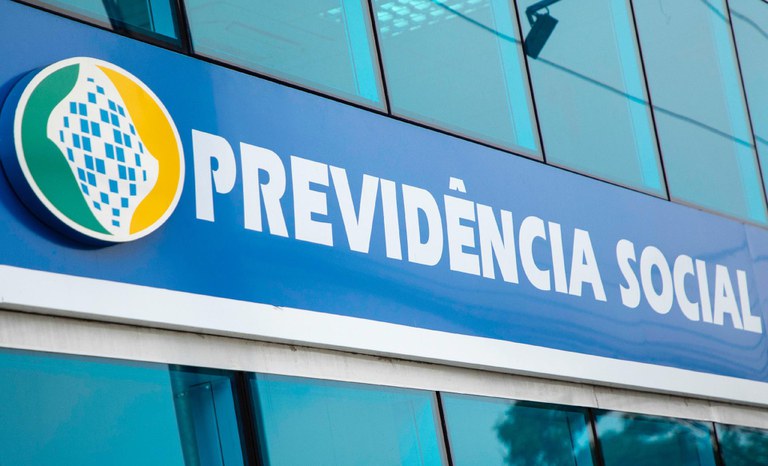Puberty refers to the process of physical changes (also termed sexual maturation) by which a child's body becomes an adult body capable of reproduction. Growth accelerates in the first half of puberty and reaches completion by the end. Body differences between boys and girls before puberty are almost entirely restricted to the genitalia. During puberty, major differences of size, shape, composition, and function develop in many body structures and systems. In a strict sense, the term puberty (and this article) refer to the bodily changes of sexual maturation rather than the psychosocial and cultural aspects of development.
Adolescence is the period of psychological and social transition between childhood and adulthood. Adolescence largely overlaps the period of puberty but its boundaries are less precisely defined and it refers as much to the psychosocial and cultural characteristics of development during the teen years as to the physical changes of puberty.
Puberty as a physical process [edit] Physical changes of puberty in girls [edit] Breast development The first physical sign of puberty in girls is usually a firm, tender lump under the center of the areola(e) of one or both breasts, occurring on average at about 10.5 years. This referred to as thelarche. By the widely used Tanner staging of puberty, this is stage 2 of breast development (stage 1 is a flat, prepubertal breast). Within a 6-12 months, the swelling has clearly begun in both sides, softened, and can be felt and seen extending beyond the edges of the areolae. This is stage 3 of breast development. By another 12 months (stage 4), the breasts are approaching mature size and shape, with areolae and papillae forming a secondary mound. In most young women, this mound disappears into the contour of the mature breast (stage 5), although there is so much variation in sizes and shapes of adult breasts that distinguishing advanced stages is of little practical value.
[edit] Pubic hair in girls Pubic hair is often the second unequivocal change of puberty. It is referred to as pubarche and the pubic hairs are usually visible first along the labia. The first few hairs are described as Tanner stage 2. Stage 3 is usually reached within another 6–12 months, when the hairs are too numerous to count and are appearing on the mons as well. By stage 4, the pubic hairs densely fill the “pubic triangle.” Stage 5 refers to spread of pubic hair to the thighs and sometimes upward towards the umbilicus. In about 15% of girls, the earliest pubic hair appears before breast development begins.
[edit] Vagina, uterus, ovaries The mucosal surface of the vagina also changes in response to increasing levels of estrogen, becoming thicker and a duller pink in color (in contrast to the brighter red of the prepubertal vaginal mucosa). Whitish secretions (physiologic leukorrhea) are a normal effect of estrogen as well. In the next 2 years following thelarche, the uterus and ovaries increase in size. The ovaries usually contain small cysts visible by ultrasound.
[edit] Menstruation and fertility The first menstrual bleeding is referred to as menarche. The average age of menarche is about 12.7 years, usually about 2 years after thelarche. Menses (menstrual periods) are not always regular and monthly in the first 1–2 years after menarche. Ovulation is necessary for fertility, and may or may not accompany the earliest menses. By 2 years after menarche, over 90% of girls are experiencing very regular, predictable menses accompanied by ovulation. Continued irregularity after 2 years from menarche usually predicts prolonged irregularity and anovulation. The word nubility has been proposed academically to designate achievement of fertility.
[edit] Pelvic shape, fat distribution, and body composition During this period, also in response to rising levels of estrogen, the lower half of the pelvis widens (providing a larger birth canal). Fat tissue increases to a greater percentage of the body composition than in males, especially in the typical female distribution of breasts, hips, and thighs. This produces the typical female body shape.
[edit] Body and facial hair in girls In the months and years following the appearance of pubic hair, other areas of skin which respond to androgens develop heavier hair in roughly the following sequence: underarm (axillary) hair, perianal hair, upper lip hair, sideburn (preauricular) hair, and periareolar hair. Arm and leg hair becomes heavier more gradually over 10 years or more. Although in North American culture, hair in some of these areas is unwanted, it rarely indicates a hormone imbalance unless it occurs elsewhere as well (such as under the chin and in the midline of the chest).
[edit] Height growth in girls The estrogen-induced pubertal growth spurt in girls begins at the same time the earliest breast changes begin, or even a few months before, making it one of the earliest manifestations of puberty in girls. Growth of the legs and feet accelerates first, so that many girls have longer legs in proportion to their torso in the first year of puberty. The rate of growth tends to reach a peak velocity (as much as 7.5-10 cm or 3-4 inches per year) midway between thelarche and menarche and is already declining by the time menarche occurs. In the 2 years following menarche most girls grow about 5 cm (2 inches) before growth ceases at maximal adult height. This last growth primarily involves the spine rather than the limbs.
[edit] Body odor, skin changes, and acne Rising levels of androgens can change the fatty acid composition of perspiration, resulting in a more “adult” body odor. This often precedes thelarche and pubarche by 1 or more years. Another androgen effect is increased secretion of oil (sebum) from the skin and variable amounts of acne. This change increases the susceptibility to acne, which is a characteristic affliction of puberty widely variable in its severity.
[edit] Physical changes of puberty in boys [edit] Testicular size, function, and fertility In boys, testicular enlargement is the first physical manifestation of puberty (and is termed gonadarche). Testes in prepubertal boys change little in size from about 1 year of age to the onset of puberty, averaging about 2–3 cc in volume and about 1.5-2 cm in length. Testicular size continues to increase throughout puberty, reaching maximal adult size about 6 years later. While 18-20 cc is reportedly an average adult size, there is wide variation in the normal population.
The testes have two primary functions: to produce hormones and to produce sperm. The Leydig cells produce testosterone (as described below), which in turn produces most of the changes of male puberty. However, most of the increasing bulk of testicular tissue is spermatogenic tissue (primarily Sertoli and interstitial cells). The development of sperm production and fertility in males is not as well documented. Sperm can be detected in the morning urine of most boys after the first year of pubertal changes (and occasionally earlier).
[edit] Genitalia A boy's penis grows little from the fourth year of life until puberty. Average prepubertal penile length is 6 cm. The prepubertal genitalia are described as Tanner stage 1. Within months after growth of the testes begins, rising levels of testosterone promote growth of the penis and scrotum. This earliest discernible beginning of pubertal growth of the genitalia is referred to as stage 2. The penis continues to grow until about 18 years of age, reaching an average adult size of about 12-14 cm.
Although erections occur in prepubertal boys, they become much more common during puberty, accompanied by a markedly increased libido. Ejaculation becomes possible early in puberty. Emission of seminal fluid may occur due to masturbation or spontaneously during sleep (commonly termed a "wet dream"). The ability to ejaculate is a fairly early event in puberty compared to the other characteristics. However, in parallel to the irregularity of the first few periods of a girl, for the first one or two years after a boy's first ejaculation, his seminal fluid may contain few active sperm.
[edit] Pubic hair in boys Pubic hair often appears in a boy shortly after the genitalia begin to grow. As in girls, the first appearance of pubic hair is termed pubarche and the pubic hairs are usually first visible at the dorsal (abdominal) base of the penis. The first few hairs are described as Tanner stage 2. Stage 3 is usually reached within another 6–12 months, when the hairs are too numerous to count. By stage 4, the pubic hairs densely fill the “pubic triangle.” Stage 5 refers to spread of pubic hair to the thighs and upward towards the umbilicus.
[edit] Body and facial hair in boys In the months and years following the appearance of pubic hair, other areas of skin which respond to androgens develop heavier hair in roughly the following sequence: underarm (axillary) hair, perianal hair, upper lip hair, sideburn (preauricular) hair, periareolar hair, and the rest of the beard area. Arm, leg, and back hair become heavier more gradually. There is a large range in amount of body hair among adult men, and significant differences in timing and quantity of hair growth among different ethnic groups.
[edit] Voice change Under the influence of androgens, the voice box, or larynx, grows in both genders. However, this growth is far more prominent in boys, causing the male voice to drop, rather abruptly, about one octave, probably because the larger vocal folds have a lower fundamental frequency. Occasionally, this is accompanied by cracking and breaking sounds in the early stages. Most of the voice change happens during stage 4 of male puberty around the time of peak growth. However, it usually precedes the development of significant facial hair by several months to years.
[edit] Height growth in boys Compared to girls’ early growth spurt, growth accelerates more slowly in boys and lasts longer, resulting in a taller adult stature among males than females (on average about 10 cm or 4 inches). The difference is attributed to the much greater potency of estrogen compared to testosterone in promoting bone growth, maturation, and epiphyseal closure. In boys, growth begins to accelerate about 9 months after the first signs of testicular enlargement and the peak year of the growth spurt occurs about 2 years after the onset of puberty, reaching a peak velocity of about 8.5–12 cm or 3.5–5 inches per year). The feet and hands experience their growth spurt first, followed by the limbs, and finally ending in the trunk. Epiphyseal closure and adult height are reached more slowly, at an average age of about 17.5 years. As in girls, this last growth primarily involves the spine rather than the limbs.
[edit] Male musculature and body shape By the end of puberty, adult men have heavier bones and nearly twice as much skeletal muscle. Some of the bone growth (e.g., shoulder width and jaw) is disproportionately greater, resulting in noticeably different male and female skeletal shapes. The average adult male has about 150% of the lean body mass of an average female, and about 50% of the body fat.
This muscle develops mainly during the later stages of puberty, and muscle growth can continue even after a male is biologically adult. The peak of the so-called "strength spurt," the rate of muscle growth, is attained about one year after a male experiences his peak growth rate.
[edit] Body odor, skin changes, acne Rising levels of androgens can change the fatty acid composition of perspiration, resulting in a more “adult” body odor. As in girls, another androgen effect is increased secretion of oil (sebum) from the skin and variable amounts of acne.
[edit] Breast development in boys: pubertal gynecomastia Estradiol is produced from testosterone in male puberty as well as female and male breasts often respond to the rising estradiol levels. This is termed gynecomastia. In most boys, the breast development is minimal, similar to what would be termed a "breast bud" in a girl, but in many boys, breast growth is substantial. It usually occurs after puberty is underway, may increase for a year or two, and usually diminishes by the end of puberty. It is worsened by extra adipose tissue if the boy is overweight.
Although this is a normal part of male puberty for perhaps half of boys, breast development is usually as unwelcome as upper lip hair in girls, and can be removed surgically if the boy's distress is substantial.
[edit] Variations of normal puberty Typical puberty is described above, but many children vary with respect to timing of onset, tempo, steadiness of continuation, and sequence of events.
[edit] Timing of onset Although puberty begins at an age between the 3rd and 97th percentiles for most children, much earlier and much later ages of onset occur in the remaining 6%. Timing of onset is affected by genetic factors, body mass and nutritional state, and general health. Timing may also be affected by environmental factors (exogenous hormones and environmental substances with hormone-like effects) and there is even weak evidence that life experiences may play a role as well. Ethnic/racial differences have been recognized for centuries, although many of them may be attributable to confounding environmental and socioeconomic factors (such as weight).
Average age for first signs of breast development in girls is about 10.5 years. Average age for first signs of testicular enlargement in boys is 11.5 years. See Tables below for approximate average ages and ranges for other milestones of physical development of North American children.
Duration of puberty (time from onset to completion) varies less between children than does the age of onset. Duration of puberty in girls from onset of breast development to cessation of growth is roughly 5 years. Duration of puberty in boys from first testicular enlargement to cessation of growth is about 6 years.
Variations of tempo and progression Tempo is the speed at which the process of pubertal changes progresses from beginning to end. The duration of puberty generally varies less than timing of onset, and approximates 4 years for girls and 6 for boys (from first physical changes to attainment of adult height). Nevertheless, some healthy children can proceed through puberty at a faster or slower tempo than most.
An interruption of progression of puberty is usually, but not always, due to abnormal causes such as malnutrition or anorexia nervosa. Perhaps the most common apparently healthy variation is apparent interruption for a couple of years just after attainment of an early sign of initiation. For instance, some girls may seem to develop stage 2 breast buds at 6 or 7 years of age with no other signs of puberty, and nothing may happen for 2 or 3 years. Physicians refer to this as "unsustained puberty."
[edit] Variations of sequence The sequence of events of pubertal development can occasionally vary. For example, in about 15% of boys and girls, pubarche (the first pubic hairs) can precede, respectively, gonadarche and thelarche by a few months. Much less commonly, menarche can occur before puberty in a few girls. These variations deserve medical evaluation because they can occasionally signal a disease.
[edit] Puberty as a hormonal process The endocrine reproductive system consists of the hypothalamus, the pituitary, the gonads, and the adrenal glands, with input and regulation from many other body systems. The simplest description of hormonal puberty is the following:
The brain's hypothalamus begins to release pulses of GnRH. True puberty is often termed "central puberty" because it begins as a process of the central nervous system. Cells in the anterior pituitary respond by secreting LH and FSH into the circulation. The ovaries or testes respond to the rising amounts of LH and FSH by growing and beginning to produce estradiol and testosterone. Rising levels of estradiol and testosterone produce the body changes of female and male puberty. [edit] Components of the endocrine reproductive system The arcuate nucleus of the hypothalamus is the driver of the reproductive system. It has neurons which generate and release pulses of GnRH into the portal venous system of the pituitary gland. The arcuate nucleus is affected and controlled by neuronal input from other areas of the brain and hormonal input from the gonads and a variety of other systems.
The pituitary gland responds to the GnRH pulses by releasing LH and FSH into the blood of the general circulation, also in a pulsatile pattern.
The gonads (testes and ovaries) respond to rising levels of LH and FSH by producing the steroid sex hormones, testosterone and estradiol.
The adrenal glands are a second source for steroid hormones. Adrenal maturation, termed adrenarche, typically precedes gonadarche in mid-childhood.
[edit] Major hormones of puberty GnRH (gonadotropin releasing hormone) is a peptide hormone released from the hypothalamus which stimulates gonadotrope cells of the anterior pituitary. LH (luteinizing hormone) is a larger protein hormone secreted into the general circulation by gonadotrope cells of the anterior pituitary. The main target cells of LH are the Leydig cells of testes and the theca cells of the ovaries. LH seems to play a larger role in the initiation of puberty than LH, as levels increase about 25-fold with the onset of puberty, compared with the 2.5-fold increase of LH. FSH (follicle stimulating hormone) is a peptide hormone secreted into the general circulation by the gonadotrope cells of the anterior pituitary. The main target cells of FSH are the ovarian follicles and the Sertoli cells and spermatogenic tissue of the testes. Testosterone is a steroid hormone produced primarily by the Leydig cells of the testes, and in lesser amounts by the theca cells of the ovaries and the adrenal cortex. Testosterone is the primary mammalian androgen and the "original" anabolic steroid. It acts on androgen receptors in responsive tissue throughout the body. Estradiol is a steroid hormone produced by aromatization of testosterone. Estradiol is the primary human estrogen and acts on estrogen receptors throughout the body. The largest amounts of estradiol are produced by the granulosa cells of the ovaries, but lesser amounts are derived from testicular and adrenal testoterone. Adrenal androgens are steroids produced by the zona reticulosa of the adrenal cortex in both sexes. The major adrenal androgens are dehydroepiandrosterone, androstenedione (which are precursors of testosterone), and dehydroepiandrosterone sulfate which is present in large amounts in the blood. Adrenal androgens contribute to the androgen events of early puberty in girls. IGF1 (insulin-like growth factor 1) rises substantially during puberty in response to rising levels of growth hormone and may be the principal mediator of the pubertal growth spurt. Leptin is a protein hormone produced by adipose tissue. Its primary target organ is apparently the hypothalamus. The leptin level seems to provide the brain a rough indicator of adipose mass for purposes of regulation of appetite and metabolism. It also plays a permissive role in female puberty, which usually will not proceed until an adequate body mass has been achieved. [edit] The process of puberty from an endocrine perspective The endocrine reproductive system becomes functional by the end of the first trimester of fetal life. The testes and ovaries become briefly inactive around the time of birth but resume hormonal activity until several months after birth, when incompletely understood mechanisms in the brain begin to suppress the activity of the arcuate nucleus. This has been referred to as maturation of the prepubertal "gonadostat," which becomes sensitive to negative feedback by sex steroids.
Gonadotropin and sex steroid levels fall to low levels and remain nearly undetectable for approximately another 8-10 years of childhood. Evidence is accumulating that the reproductive system is not totally inactive during the childhood years. Subtle increases in gonadotropin pulses occur, and ovarian follicles surrounding germ cells (which will become eggs) double in number.
Normal puberty is initiated in the hypothalamus, with de-inhibition of the pulse generator in the arcuate nucleus. This inhibition of the arcuate nucleus is an ongoing active suppression by other areas of the brain. The signal and mechanism releasing the arcuate nucleus from inhibition have been the subject of investigation for decades and remain incompletely understood. Leptin levels rise throughout childhood and play a part in allowing the arcuate nucleus to resume operation. If the childhood inhibition of the arcuate nucleus is interrupted prematurely by injury to the brain, it may resume pulsatile gonadotropin release and puberty will begin at an early age.
Neurons of the arcuate nucleus secrete gonadotropin releasing hormone (GnRH) into the blood of the pituitary portal system. These GnRH signals from the hypothalamus induce pulsed secretion of LH (and to a lesser degree, FSH) at roughly 1-2 hour intervals. In the years preceding physical puberty, these gonadotropin pulses occur primarily at night and are of very low amplitude, but as puberty approaches they can be detected during the day. By the end of puberty, there is little day-night difference in the amplitude and frequency of gonadotropin pulses.
An array of "autoamplification processes" increase the production of all of the pubertal hormones of the hypothalamus, pituitary, and gonads.
Regulation of adrenarche and its relationship to maturation of the hypothalamic-gonadal axis is not fully understood, and some evidence suggests it is a parallel but largely independent process coincident or even preceding central puberty. Rising levels of adrenal androgens (termed adrenarche) can usually be detected between 6 and 11 years of age, even before the increasing gonadotropin pulses of hypothalamic puberty. Adrenal androgens contribute to the development of pubic hair (pubarche), adult body odor, and other androgenic changes in both sexes. The primary clinical significance of the distinction between adrenarche and gonadarche is that pubic hair and body odor changes by themselves do not prove that central puberty is underway.
[edit] Hormonal changes of puberty in girls As the amplitude of LH pulses increases, the theca cells of the ovaries begin to produce testosterone and smaller amounts of progesterone. Much of the testosterone moves into nearby cells called granulosa cells. Smaller increases of FSH induce an increase in the aromatase activity of these granulosa cells, which converts most of the testosterone to estradiol for secretion into the circulation.
Rising levels of estradiol produce the characteristic estrogenic body changes of female puberty: growth spurt, acceleration of bone maturation and closure, breast growth, increased fat composition, growth of the uterus, increased thickness of the endometrium and the vaginal mucosa, and widening of the lower pelvis.
As the estradiol levels gradually rise and the other autoamplificanton processes occur, a point of maturation is reached when the feedback sensitivity of the hypothalamic "gonadostat" becomes positive. This attainment of positive feedback is the hallmark of female sexual maturity, as it allows the midcycle LH surge necessary for ovulation.
Levels of adrenal androgens and testosterone also increase during puberty, producing the typical androgenic changes of female puberty: pubic hair, other androgenic hair as outlined above, body odor, acne.
Growth hormone levels rise steadily throughout puberty. IGF1 levels rise and then decline as puberty ends. Growth finishes and adult height is attained as the estradiol levels complete closure of the epiphyses.
[edit] Hormonal changes of puberty in boys Early stages of male hypothalamic maturation seem to be very similar to the early stages of female puberty, though occurring about 1-2 years later.
LH stimulates the Leydig cells of the testes to make testosterone and blood levels begin to rise. For much of puberty, nighttime levels of testosterone are higher than daytime. Regularity of frequency and amplitude of gonadotropin pulses seems to be less necessary for progression of male than female puberty.
As the testosterone levels slowly rise, most of the effects are mediated through the androgen receptors by way of conversion to dihydrotestosterone in the target tissues (especially of the skin).
However, a significant portion of testosterone in adolescent boys is converted to estradiol. Estradiol mediates the growth spurt, bone maturation, and epiphyseal closure in boys just as in girls. Estradiol also induces at least modest development of breast tissue (gynecomastia) in a large proportion of boys.
[edit] Puberty as a problem See Precocious puberty See Delayed puberty [edit] References and links [edit] See also Child sexuality Adolescence [edit] External link NIH guide to puberty and adolescence (http://www.nlm.nih.gov/medlineplus/ency/article/001950.htm) Growing Up Sexually (http://www2.hu-berlin.de/sexology/GESUND/ARCHIV/GUS/INDEXATLAS.HTM) (PDF version is linked from [1] (http://www.books-reborn.com/janssen/))




 " class="attachment-atbs-s-4_3 size-atbs-s-4_3 wp-post-image" alt="O que estudar para o enem 2023">
" class="attachment-atbs-s-4_3 size-atbs-s-4_3 wp-post-image" alt="O que estudar para o enem 2023"> " class="attachment-atbs-s-4_3 size-atbs-s-4_3 wp-post-image" alt="Qual melhor curso para fazer em 2023">
" class="attachment-atbs-s-4_3 size-atbs-s-4_3 wp-post-image" alt="Qual melhor curso para fazer em 2023"> " class="attachment-atbs-s-4_3 size-atbs-s-4_3 wp-post-image" alt="Enem: Conteúdos E Aulas On-Line São Opção Para Os Estudantes">
" class="attachment-atbs-s-4_3 size-atbs-s-4_3 wp-post-image" alt="Enem: Conteúdos E Aulas On-Line São Opção Para Os Estudantes"> " class="attachment-atbs-s-4_3 size-atbs-s-4_3 wp-post-image" alt="Como Fazer Uma Carta De Apresentação">
" class="attachment-atbs-s-4_3 size-atbs-s-4_3 wp-post-image" alt="Como Fazer Uma Carta De Apresentação"> " class="attachment-atbs-s-4_3 size-atbs-s-4_3 wp-post-image" alt="Como Escrever Uma Boa Redação">
" class="attachment-atbs-s-4_3 size-atbs-s-4_3 wp-post-image" alt="Como Escrever Uma Boa Redação"> " class="attachment-atbs-s-4_3 size-atbs-s-4_3 wp-post-image" alt="Concurso INSS edital 2022 publicado">
" class="attachment-atbs-s-4_3 size-atbs-s-4_3 wp-post-image" alt="Concurso INSS edital 2022 publicado">


